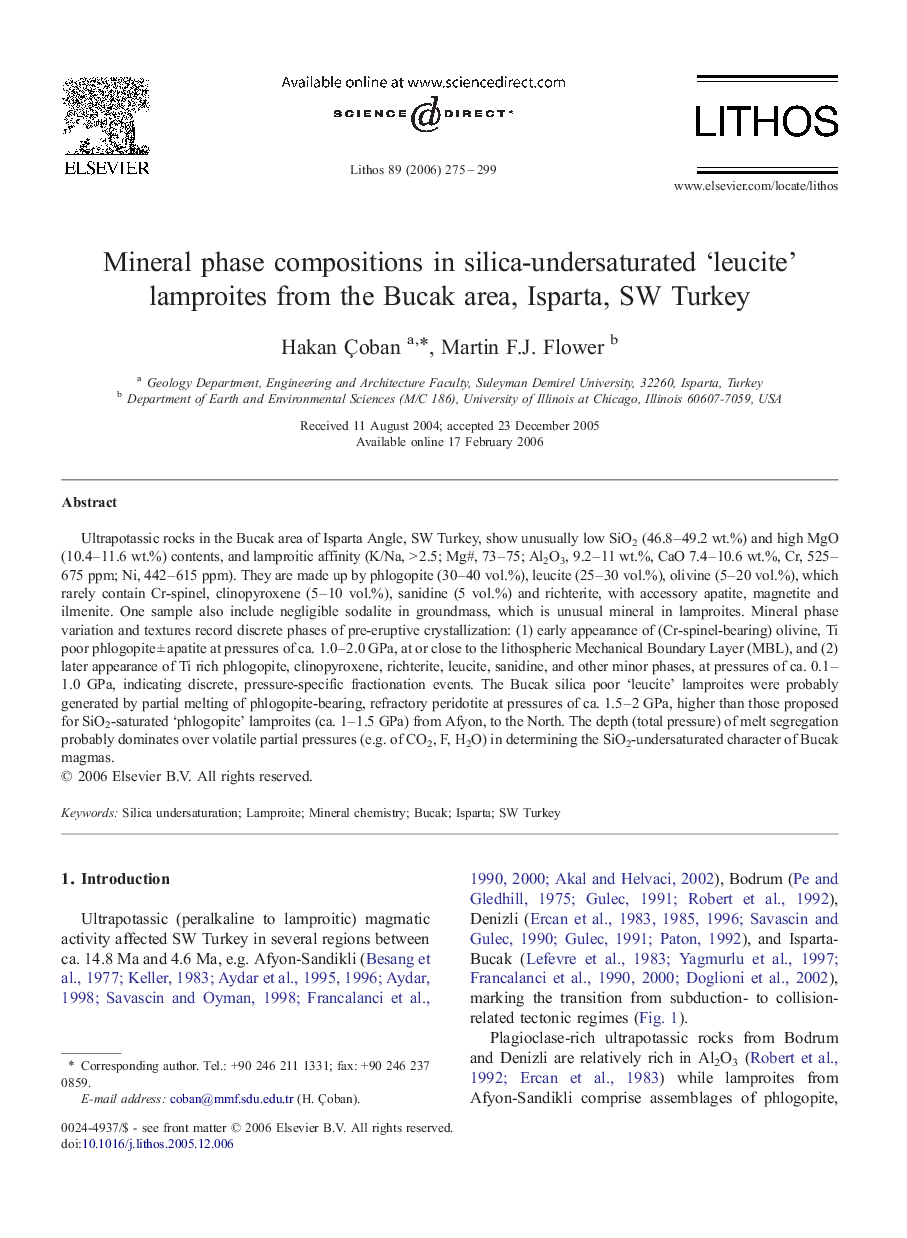| Article ID | Journal | Published Year | Pages | File Type |
|---|---|---|---|---|
| 4717934 | Lithos | 2006 | 25 Pages |
Ultrapotassic rocks in the Bucak area of Isparta Angle, SW Turkey, show unusually low SiO2 (46.8–49.2 wt.%) and high MgO (10.4–11.6 wt.%) contents, and lamproitic affinity (K/Na, > 2.5; Mg#, 73–75; Al2O3, 9.2–11 wt.%, CaO 7.4–10.6 wt.%, Cr, 525–675 ppm; Ni, 442–615 ppm). They are made up by phlogopite (30–40 vol.%), leucite (25–30 vol.%), olivine (5–20 vol.%), which rarely contain Cr-spinel, clinopyroxene (5–10 vol.%), sanidine (5 vol.%) and richterite, with accessory apatite, magnetite and ilmenite. One sample also include negligible sodalite in groundmass, which is unusual mineral in lamproites. Mineral phase variation and textures record discrete phases of pre-eruptive crystallization: (1) early appearance of (Cr-spinel-bearing) olivine, Ti poor phlogopite ± apatite at pressures of ca. 1.0–2.0 GPa, at or close to the lithospheric Mechanical Boundary Layer (MBL), and (2) later appearance of Ti rich phlogopite, clinopyroxene, richterite, leucite, sanidine, and other minor phases, at pressures of ca. 0.1–1.0 GPa, indicating discrete, pressure-specific fractionation events. The Bucak silica poor ‘leucite’ lamproites were probably generated by partial melting of phlogopite-bearing, refractory peridotite at pressures of ca. 1.5–2 GPa, higher than those proposed for SiO2-saturated ‘phlogopite’ lamproites (ca. 1–1.5 GPa) from Afyon, to the North. The depth (total pressure) of melt segregation probably dominates over volatile partial pressures (e.g. of CO2, F, H2O) in determining the SiO2-undersaturated character of Bucak magmas.
